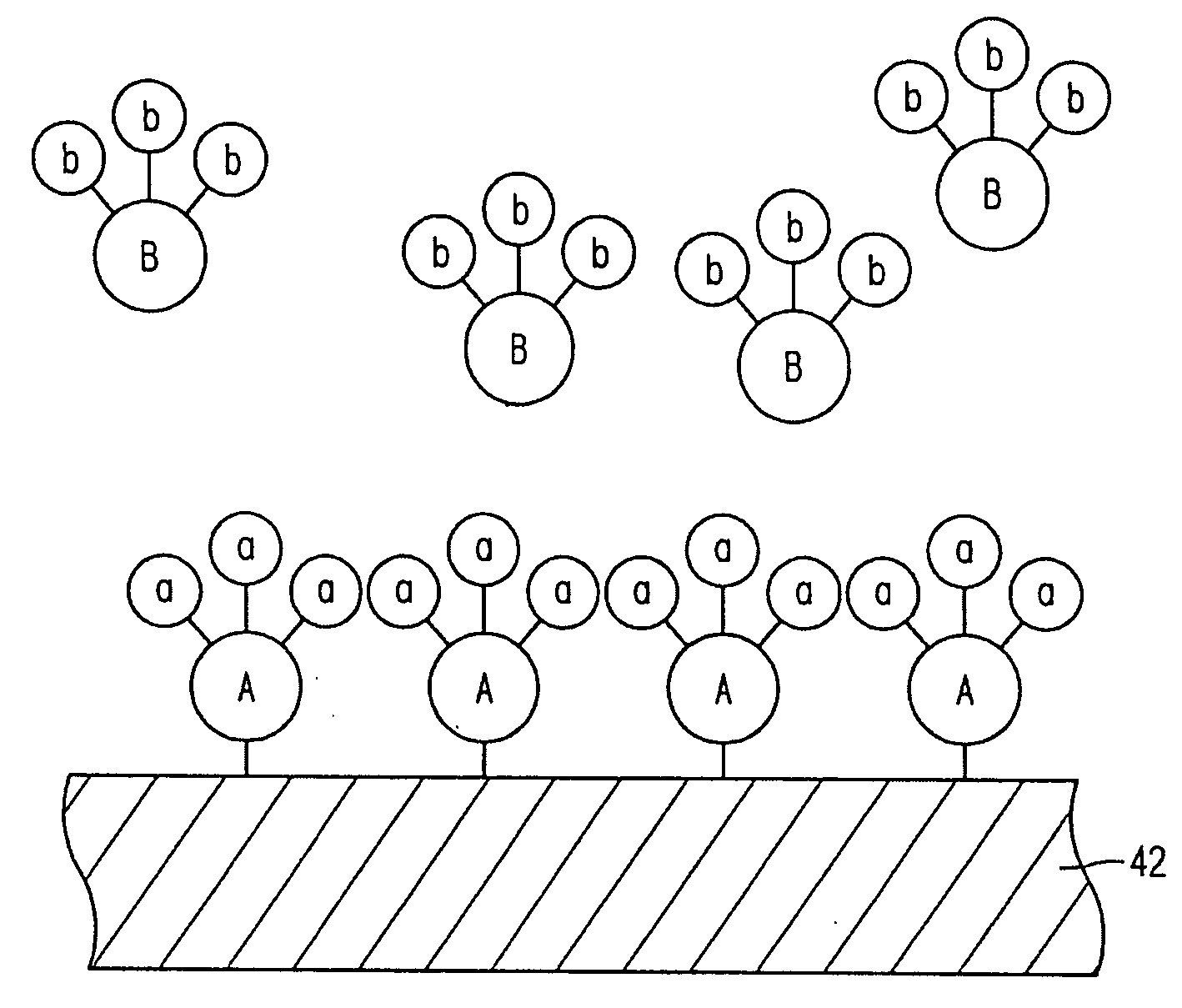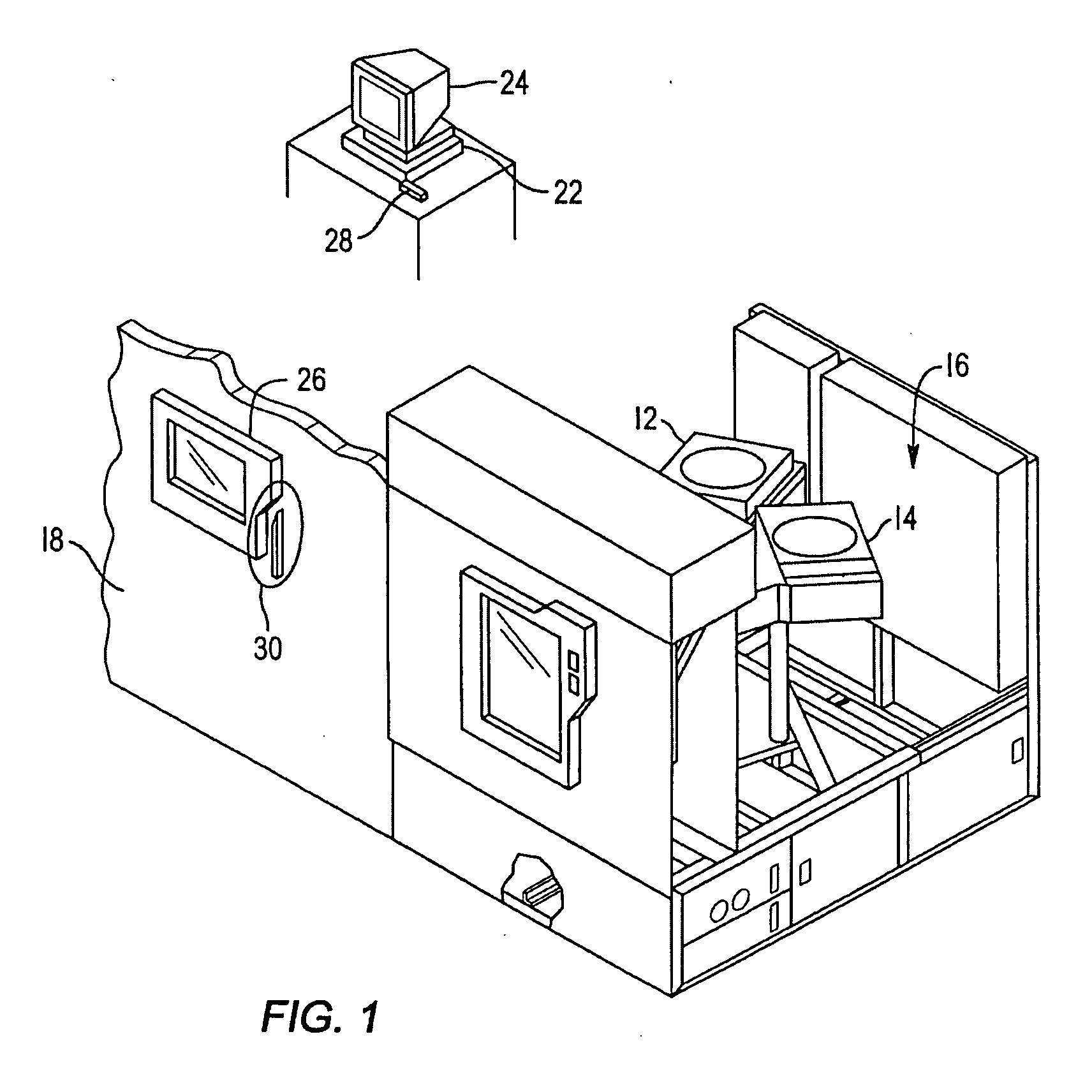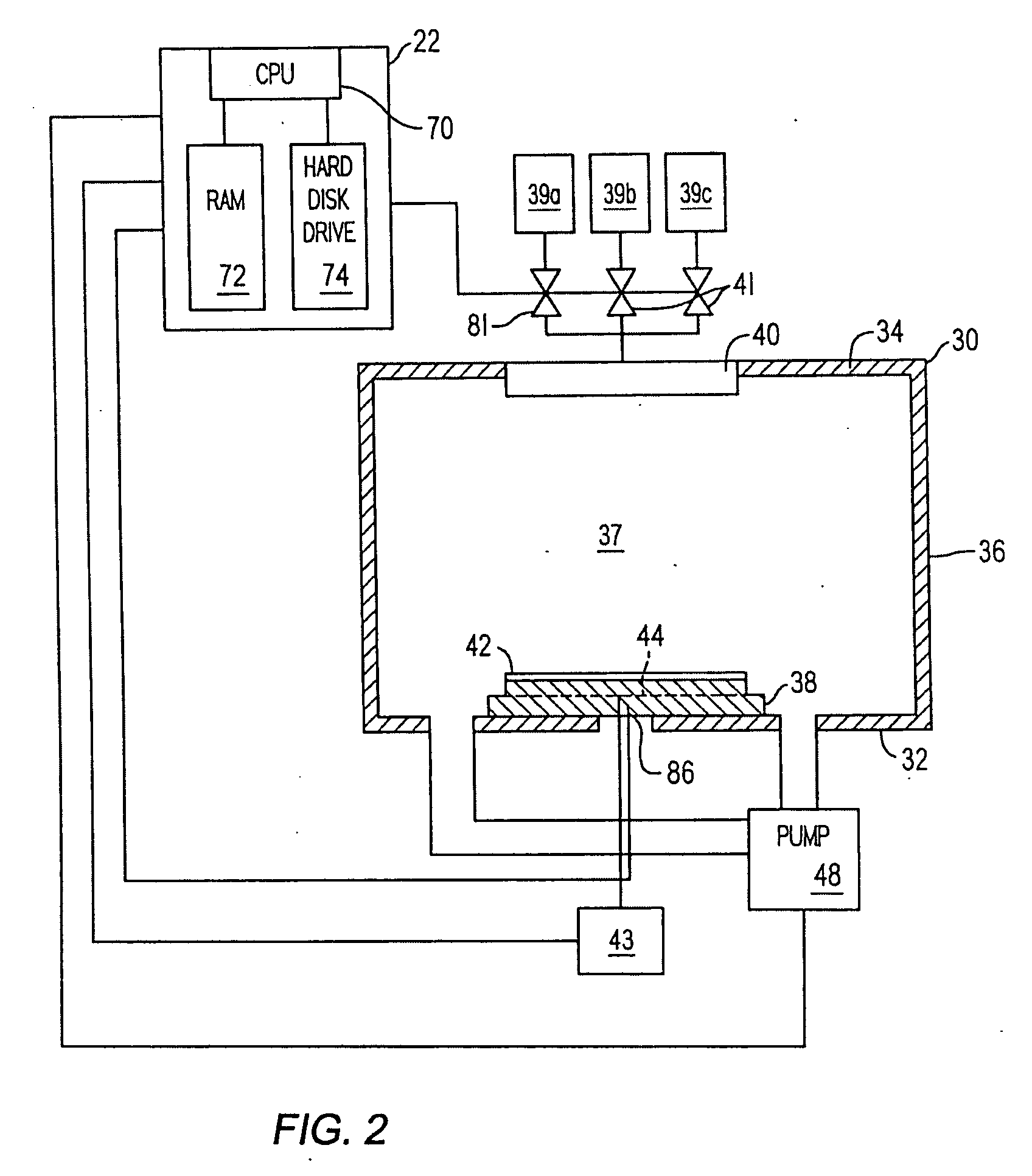Method and system for controlling the presence of fluorine in refractory metal layers
a technology of refractory metal and fluorine, which is applied in the direction of chemically reactive gas growth, crystal growth process, polycrystalline material growth, etc., can solve the problems of compromising the structural and operational integrity of the underlying portion of the integrated circuit being formed, the deposition rate is much lower than typical cvd techniques by at least one order of magnitude, and the resistance of contacts is reduced, and the amount of fluorine present in the resulting refractory metal layer is substantially reduced
- Summary
- Abstract
- Description
- Claims
- Application Information
AI Technical Summary
Benefits of technology
Problems solved by technology
Method used
Image
Examples
Embodiment Construction
[0028] Referring to FIG. 1, an exemplary wafer processing system includes two or more processing chambers 12 and 14 disposed in a common work area 16 surrounded by a wall 18. The processing chambers 12 and 14 are in data communication with a controller 22 that is connected to one or more monitors, shown as 24 and 26. The monitors typically display common information concerning the process associated with the processing chambers 12 and 14. One of the monitors 26 is mounted to the wall 18, with the remaining monitor 24 being disposed in the work area 16. Operational control of the processing chambers 12 and 14 may be achieved use of a light pen, associated with one of the monitors 24 and 26, to communicate with the controller 22. For example, light pen 28 is associated with monitor 24 and facilitates communication with the controller 22 through monitor 24. Light pen 30 facilitates communication with the controller 22 through monitor 26.
[0029] Referring both to FIGS. 1 and 2, each of ...
PUM
| Property | Measurement | Unit |
|---|---|---|
| Temperatures | aaaaa | aaaaa |
| Temperatures | aaaaa | aaaaa |
| reflectivity | aaaaa | aaaaa |
Abstract
Description
Claims
Application Information
 Login to View More
Login to View More - R&D
- Intellectual Property
- Life Sciences
- Materials
- Tech Scout
- Unparalleled Data Quality
- Higher Quality Content
- 60% Fewer Hallucinations
Browse by: Latest US Patents, China's latest patents, Technical Efficacy Thesaurus, Application Domain, Technology Topic, Popular Technical Reports.
© 2025 PatSnap. All rights reserved.Legal|Privacy policy|Modern Slavery Act Transparency Statement|Sitemap|About US| Contact US: help@patsnap.com



